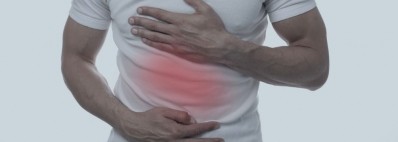Promotional Features
RESPECTA Balance Gel: Balancing vaginal flora to bring relief to women
Bacterial vaginosis is the most common vaginal infection in reproductive-age women.1 Sufferers have access to multiple treatments but the high rate of recurrence and patient-to-patient variability in the effectiveness of existing products points to the need for additional options. Giellepi has responded to that need by developing RESPECTA Balance Gel, a topical medical device with a proven mechanism of action that is available for private label distribution in European and international markets.
The need for new treatment options for women with bacterial vaginosis is evident in data on the prevalence, outcomes and impact of the condition. Almost 25% of women aged 15 to 49 years in Europe have bacterial vaginosis.2 France, Germany, Italy, Spain and the UK are home to 67.5 million reproductive-age women, suggesting there are around 16 million women with bacterial vaginosis in the biggest European markets.3
Many women are looking for new treatments for bacterial vaginosis. The antibiotic metronidazole is commonly used to treat the condition and associated with four-week cure rates of up to 85%.4 Yet, the condition recurs in most people within one year.5 The recurrence of the condition leaves women searching for alternatives to metronidazole and clindamycin. Equally, some women prefer to find an over-the-counter treatment than go to their physician to get a prescription for the antibiotic.
No one product will meet the needs of all women with bacterial vaginosis. A health intervention, be it a drug, medical device, prebiotic or probiotic, may work in one woman but not another for a multitude of reasons.6–8 More treatment options are needed if all women are to get lasting relief from bacterial vaginosis.
What makes an effective bacterial vaginosis product?
The development of successful bacterial vaginosis products begins with a clear understanding of the drivers of the condition. Bacterial vaginosis occurs when levels of lactobacilli in the vaginal flora fall. At the same time, anaerobic bacteria proliferate, leading to symptoms including discharge, a “fishy” odor and itching.
Other microorganisms such as yeast or aerobic bacteria cause vaginitis, vaginal inflammation that is associated with itching, burning and discharge. Whether caused by bacterial or yeast infections, vaginosis and vaginitis are often the result of changes to the vaginal microbiota and, in some cases, physiological vaginal pH.
While the structure of microbial communities in the vagina is dynamic, high levels of Lactobacillus species, particularly Lactobacillus crispatus, are the hallmark of health, in part because they produce lactic acid and keep the pH close to 4.5.9 A low pH is needed to keep the vaginal flora in balance.
Vaginal epithelial cells naturally support the proliferation of lactobacilli by providing the glycogen the bacteria use in the production of lactic acid. Women with high levels of free glycogen in genital fluid typically have the lactobacilli-rich bacterial communities and low pH associated with good health.10
Giellepi approached the development of a bacterial vaginosis product armed with an understanding of the markers of good vaginal health and the drivers of the condition. That understanding enabled Giellepi to identify the key functional ingredients needed for an effective treatment. The result is a Class IIa medical device, RESPECTA Balance Gel, that addresses the core elements of vaginal health.
RESPECTA Balance Gel features a plant-derived form of glycogen to provide a source of energy for the lactobacilli that dominate healthy communities of vaginal flora. Giellepi also included lactic acid to support the work of the lactobacilli to restore and maintain the low pH associated with good vaginal health, and added the prebiotic soluble fiber polydextrose to selectively feed friendly bacteria. Lactic acid and polydextrose work synergistically to restore the normal pH and neutralize unpleasant odors.
Giellepi also added hyaluronic acid, a molecule that is found naturally in the vaginal lining and used in products to treat vaginal dryness.11 Giellepi included hyaluronic acid to improve moistness, protect the skin and enhance regeneration of vaginal tissues. Finally, Giellepi added the odor-neutralizing agent farnesol, which has antifungal effects against a common cause of vaginal yeast infections, including Candida albicans and non-albicans species.12,13
The combination of ingredients is intended to create the ideal environment for the proliferation of lactobacilli. Women can accelerate the proliferation of lactobacilli by using RESPECTA Balance Gel in combination with an oral probiotic such as Giellepi’s Respecta capsules.
How Giellepi validated RESPECTA Balance Gel
Giellepi validated the efficacy of RESPECTA Balance Gel in an in vitro study that built on the positive findings of earlier clinical trials of an oral formulation of the product. The in vitro study showed the vaginal gel does not negatively affect the lactobacilli associated with good vaginal health. There was no dysbiosis or negative changes in the balance of the vaginal microbiome after administration.
Rather, RESPECTA Balance Gel supported the proliferation of friendly bacteria. Lactobacilli were found on the tissue surface in large numbers in their active replicative phase, leading the researchers to conclude overnight treatment with RESPECTA Balance Gel boosts colonization by the key bacteria.
The findings validated RESPECTA Balance Gel and Giellepi’s decision to base the product on glycogen. With RESPECTA Balance Gel providing lactobacilli with high levels of glycogen, while also lowering the pH and neutralizing odors, Giellepi has created a medical device that targets the drivers of bacterial vaginosis and vaginitis to restore the vagina to good health.
Millions of women need such a product. By working with Giellepi, private label distributors can address the needs of those women through the commercialization of a safe, reliable and proven medical device.
References
1. Kairys, N. & Garg, M. Bacterial Vaginosis. in StatPearls (StatPearls Publishing, 2020).
2. Peebles, K., Velloza, J., Balkus, J. E., McClelland, R. S. & Barnabas, R. V. High Global Burden and Costs of Bacterial Vaginosis: A Systematic Review and Meta-Analysis. Sex. Transm. Dis. 46, 304–311 (2019).
3. Women of reproductive age (15-49 years) population (thousands). https://www.who.int/data/maternal-newborn-child-adolescent-ageing/indicator-explorer-new/mca/women-of-reproductive-age-(15-49-years)-population-(thousands).
4. Oduyebo, O. O., Anorlu, R. I. & Ogunsola, F. T. The effects of antimicrobial therapy on bacterial vaginosis in non-pregnant women. Cochrane Database Syst. Rev. CD006055 (2009).
5. Bradshaw, C. S. et al. High recurrence rates of bacterial vaginosis over the course of 12 months after oral metronidazole therapy and factors associated with recurrence. J. Infect. Dis. 193, 1478–1486 (2006).
6. Sweeney, G. D. Variability in the human drug response. Thromb. Res. Suppl. 4, 3–15 (1983).
7. Dey, M. Toward a Personalized Approach in Prebiotics Research. Nutrients 9, (2017).
8. Fuller, R. Reasons for the apparent variation in the probiotic response. Biologia 61, 751–754.
9. Lewis, F. M. T., Bernstein, K. T. & Aral, S. O. Vaginal Microbiome and Its Relationship to Behavior, Sexual Health, and Sexually Transmitted Diseases. Obstet. Gynecol. 129, 643–654 (2017).
10. Mirmonsef, P. et al. Free glycogen in vaginal fluids is associated with Lactobacillus colonization and low vaginal pH. PLoS One 9, e102467 (2014).
11. Stute, P. Is vaginal hyaluronic acid as effective as vaginal estriol for vaginal dryness relief? Arch. Gynecol. Obstet. 288, 1199–1201 (2013).
12. Vaginal Candidiasis. https://www.cdc.gov/fungal/diseases/candidiasis/genital/index.html (2020).
13. Yar, N., Wittman, E., Schaut, D., Seta, F. D. & Larsen, B. Effects of farnesol on drug-resistant and non-resistant candida albicans: Implications for cosmetic and pharmaceutical applications. Adv. Microbiol. 10, 383–396 (2020).





